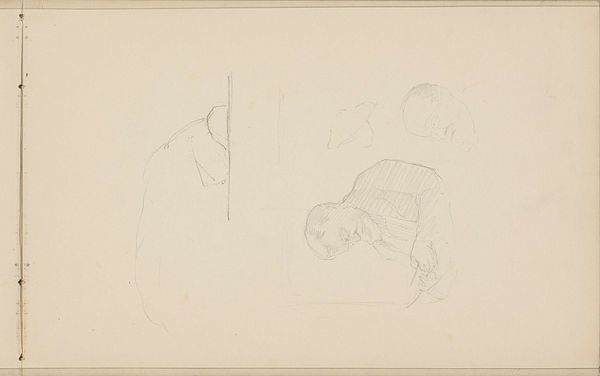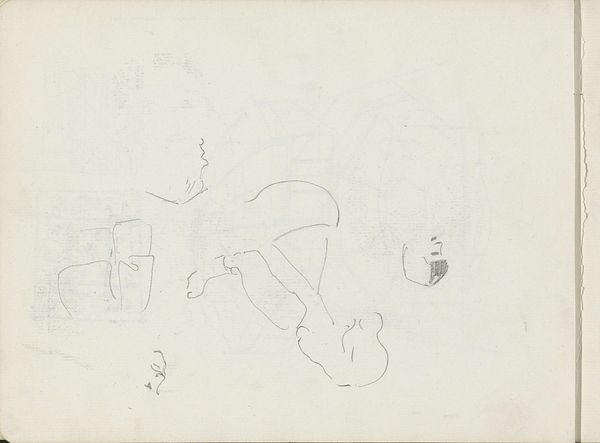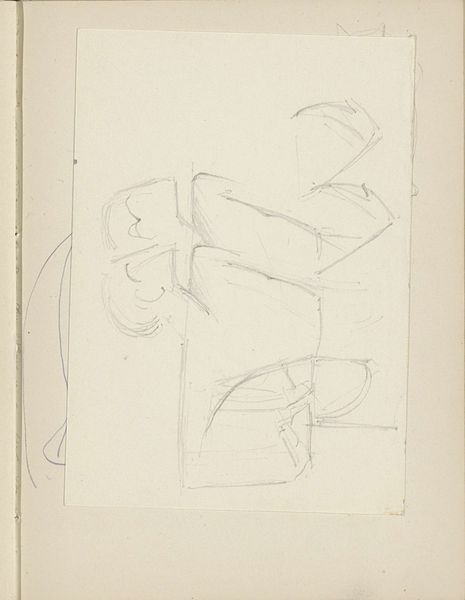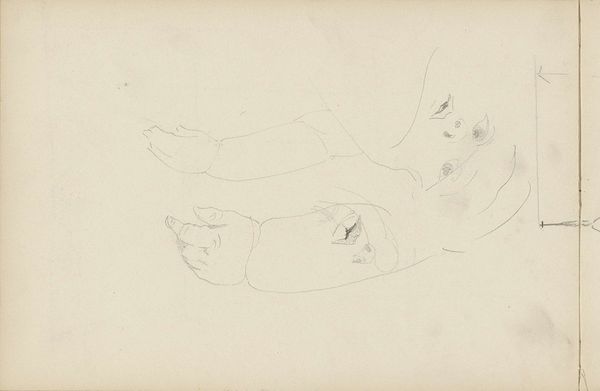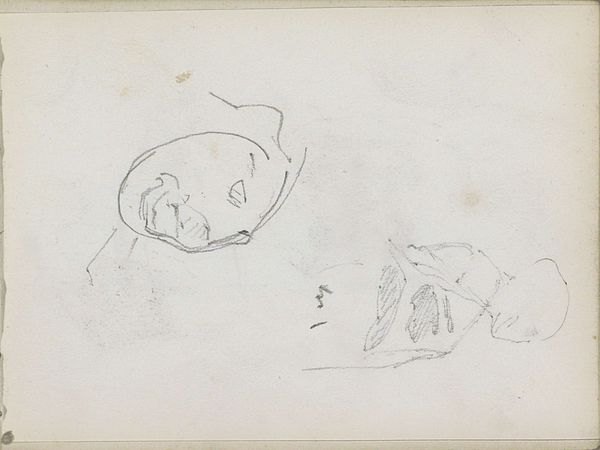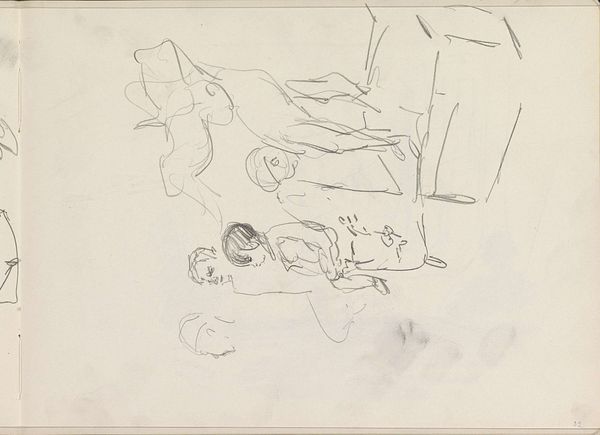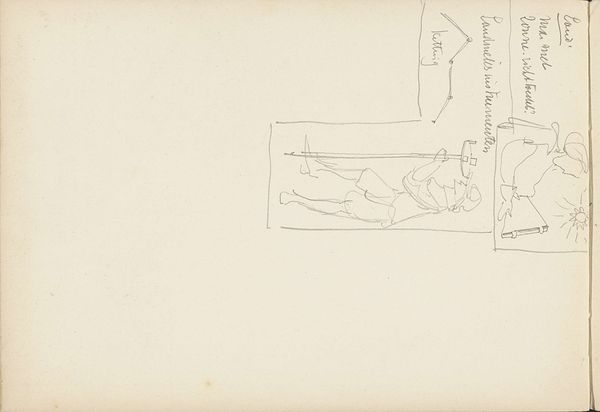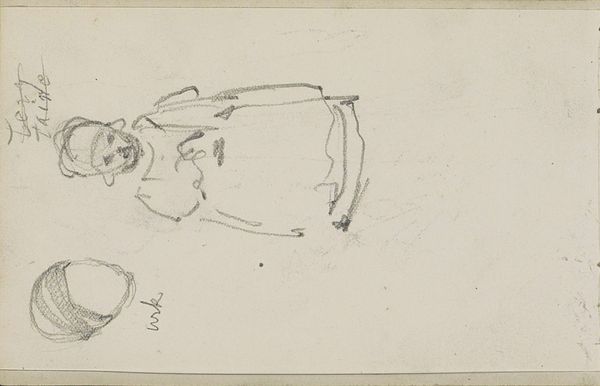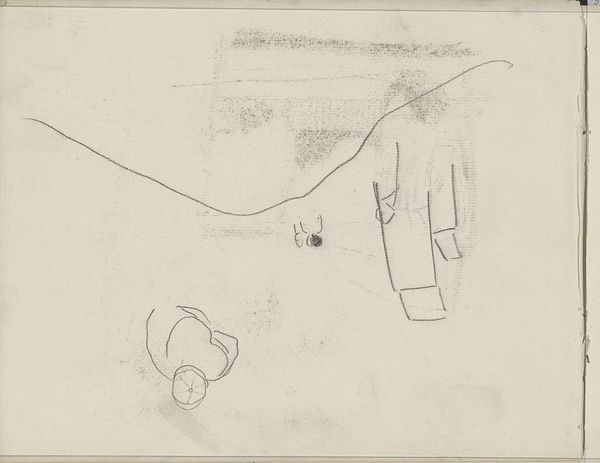
#
light pencil work
#
pen sketch
#
pencil sketch
#
personal sketchbook
#
idea generation sketch
#
ink drawing experimentation
#
pen-ink sketch
#
sketchbook drawing
#
sketchbook art
#
initial sketch
Copyright: Rijks Museum: Open Domain
Editor: Here we have Carel Adolph Lion Cachet's "Liggende baby op een kussen," created in 1908. It's a delicate pencil sketch, and I find its tenderness quite moving. What draws your attention when you look at this seemingly simple study? Curator: I see more than just a simple sketch. I see the artist grappling with societal expectations surrounding motherhood and domesticity in the early 20th century. How does Cachet, as a male artist, engage with this intimate subject matter? Does he romanticize it, or does he offer a more nuanced perspective? Editor: That's fascinating! I hadn't considered the artist's gender in relation to the subject. It does seem… observational. There's a certain distance. Curator: Exactly! And what does that distance signify? Is it a reflection of the limited roles men were allowed in childcare at the time? Or is it perhaps a commentary on the idealization of motherhood itself? Consider the composition. The baby seems almost… adrift, even on a pillow. Editor: It's true, the lines are faint, almost hesitant. Is he perhaps subtly critiquing the societal pressures placed on women to embody perfect maternal bliss? Curator: Precisely! Think about the burgeoning feminist movements of that era. Could this sketch be interpreted as a quiet act of solidarity, acknowledging the complexities and challenges of motherhood beyond the sentimental clichés? What do you think? Editor: I never would have seen that on my own. Looking at it now, there's a vulnerability in the sketch that speaks volumes. I really appreciate the nuance that you've provided on this image. Curator: Art provides such important historical context. That’s exactly what makes art history so compelling. It gives us a place to understand what historical and sociological factors went into it.
Comments
No comments
Be the first to comment and join the conversation on the ultimate creative platform.
